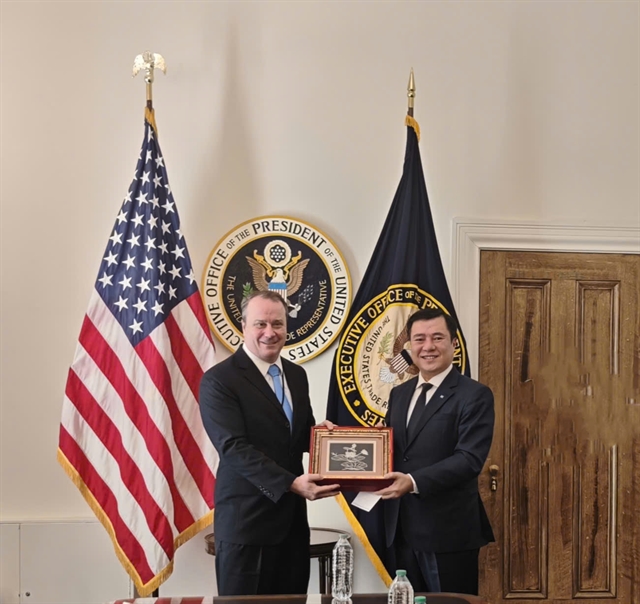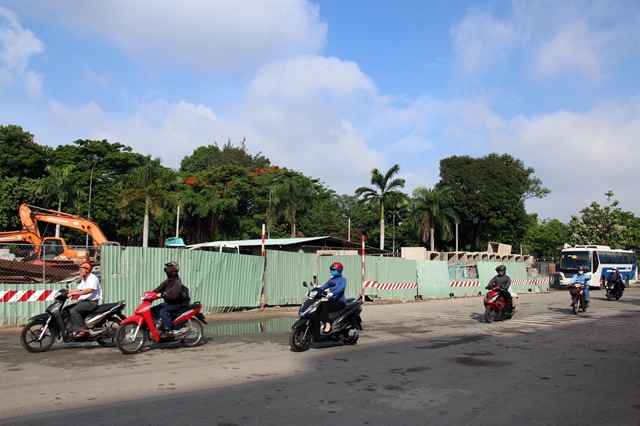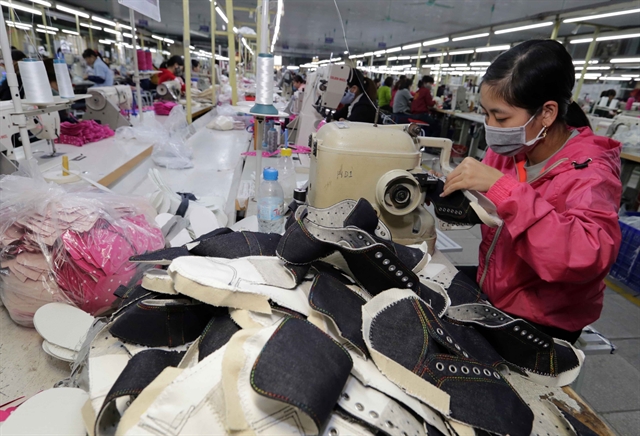 Economy
Economy

Vietnamese enterprises need to take advantage of tariff reductions under the Comprehensive and Progressive Agreement for Trans Pacific Partnership (CPTPP) to increase exports to Australia.

|
| Export turnover of the footwear and leather industry reached nearly US$4 billion in the first quarter of 2019, up 15.3 per cent year on year. Vietnamese enterprises need to research the Australian market to meet customer demands. VNA/VNS Photo Trần Việt |
HÀ NỘI — Vietnamese enterprises need to take advantage of tariff reductions under the Comprehensive and Progressive Agreement for Trans Pacific Partnership (CPTPP) to increase exports to Australia.
The statement was made by Nguyễn Thị Thu Trang, director of the WTO Integration Centre under the Việt Nam Chamber of Commerce and Industry (VCCI), at a press conference in Hà Nội on Friday, themed “Potential of Australian Market Under the CPTPP”.
According to Trang, Australia is one of the 20 largest economies in the world, with outstanding potential in science and technology, mineral exploitation, high-quality services and agricultural products.
“Australia is also a market with high purchasing power and stability. Việt Nam and Australia are both members of CPTPP, which will help promote trade and expand the scale of investment and co-operation between the two sides in the future,” Trang said.
Although each side had its own potential, strengths and a variety of commodities, the value of Việt Nam's exports to Australia was still modest, she said, adding that the main products shipped from Việt Nam to Australia were footwear and cashew nuts. Việt Nam could also strengthen co-operation with Australia by increasing imports, including technologies that Australia has advantages in as well as consultation services, Trang said.
When exporting to Australia, Vietnamese enterprises needed to understand the market trend, consumer tastes and regulations on food safety and origins to meet the requirements of importers, said Phùng Thị Lan Phương, head of the FTA Division of the WTO and Integration Centre of the VCCI.
“It is worth noting that Australian is one of the most fastidious importers in the world. The room for exporting Vietnamese products is still vast but not for all types of products. Consumer numbers are also smaller than other traditional export markets,” Phương said.
Vietnamese enterprises needed to study carefully to penetrate the market by focusing on agricultural products such as dragon fruit, mango and key export products such as textiles, computers, wooden furniture and telephones, she said.
Đinh Thị Mỹ Loan, chairwoman of the Việt Nam Retailers Association, told Việt Nam News that Australian importers expected their suppliers to provide products with good and stable quality on time.
“Australian buyers usually order a sample first because they want to check the products’ quality and consumer tastes. If we want to sell more products to them, Vietnamese suppliers must be willing to occasionally accept smaller orders,” Loan said.
To approach Australia's retail system, Vietnamese businesses needed to build long-term business strategies which focus on product introduction and branding, trust creation and relationships, Loan said.
“The quality of goods is still inadequate compared to competitors such as China, Thailand, Malaysia and Indonesia.”
In order to stand firm in the Australian market, Vietnamese enterprises must regard quality as the top priority rather than focusing on quantity and price, Loan said. — VNS




